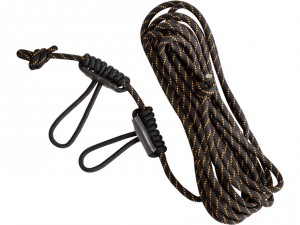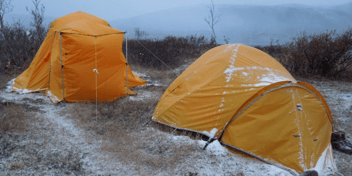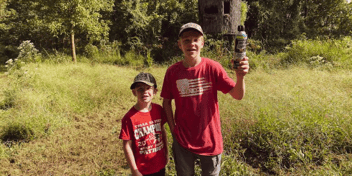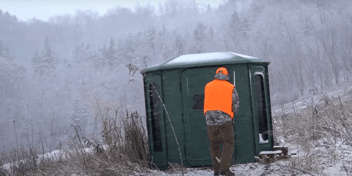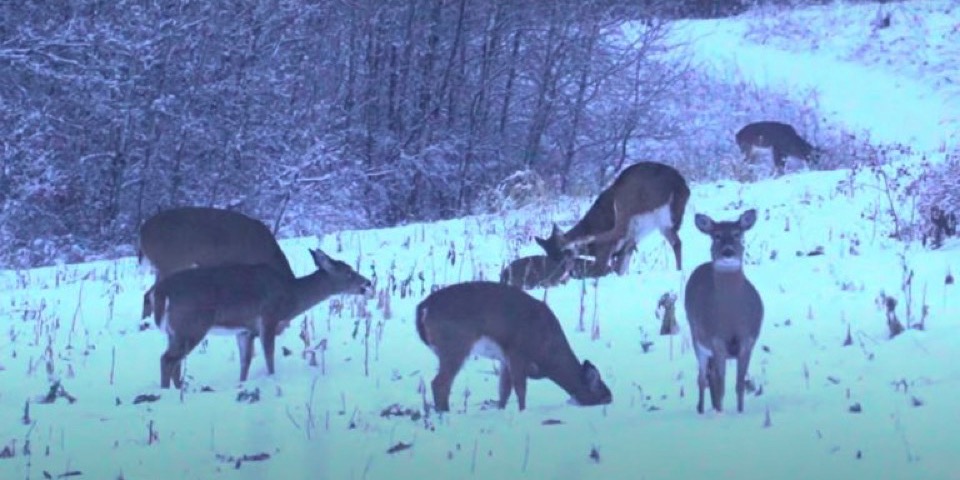
Late-season deer hunting is a season unto itself. For many deer hunters, passion for the pursuit is waning, especially if a man hasn’t filled his tag. The weather is cold. The buck movement is scarce. All of which makes for a hunting experience that is as dead as the lifeless white oak leaves still hanging on the branch.
Hunt High
By the late season, deer hunting is about pressure. Pressure has forced bucks into survival mode, which means you can’t afford any real mistakes. Truthfully, if you blow it, that’s not so bad; after all, it’s the late season and you weren’t expecting much anyway. Even still, you don’t want to ruin what chances you do have and one mistake you cannot make - early season or late - is being winded.
I’m amazed at how low the average hunter hangs his stand on a tree. Granted, in some regions of the nation, the tree growth native to some regions just won’t allow high sets. When at all possible, however, get further up the tree. You’d be amazed at the difference 25 feet make in terms of getting about his nose and getting away with a little more movement.
Years ago I started a little system that ensured I was high enough up a tree when I was forced to use a climber. I would tie a knot at my rope at the 20’ mark, and I’d tie another at 25’ on my 30’ rope. That would ensure that I knew, even in the early morning twilight, not to stop climbing until I was at least at the first knot if the tree allowed it.
Mid-Day Food Sources
Never forget: he’s got to eat. No matter how much pressure he’s under, a buck has got to eat to survive. He may not move far, but he’s got to get on the hoof at some point during daylight hours.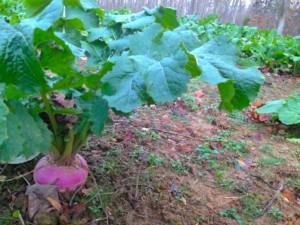
A friend of mine is an Oklahoma rancher. He said that the most frequent sightings he has during daylight hours while he’s out checking cattle is between 11 am to 1 pm and according to him, he generally sees a buck on the edge of a food source not far from cover.
So, think about your hunting areas in terms of clover fields or food sources where there’s still something to eat, that have thick access areas to that field where a buck could slip through thick cover, hit the open field just long enough to grab a bite, and then disappear back into the structure.
Late-Season Deer Hunting = Being Creative
Hunters are as pattern-able as the bucks they pursue. We are creatures of habit. This means that the average hunter, even in the late season, is still a guy who hunts from daylight to 9 am and then again from 3 pm to dark. Same. Old. Routine. Year after year.
Mix it up. Hunt mid-day sits. Hunt in the rain. Do something you’d not normally do.
If you hunt in a hunting club or a large lease, think about how far the average hunter goes to “get away” from other hunters. For decades you’ve heard or read stories where some hunter got the wild notion to hunt a white oak grove not 100 yards from the camp house and killed a decent buck. Why? Because hunters drove right past it every day.
Think outside the box. It’ll often pay off.
If you want to see a quick video on how creativity was the sole reason I shot the buck of a lifetime, watch the video below.
Try Late-Season Drag Rag
In my teenage years I killed a really nice 8 pointer that, in retrospect, was due to being both creative and using scents (although the scent wasn’t a drag rag of my own).
It was late in the year, and I’d yet to kill a buck. On one clear, cold evening about 45 minutes before sundown, I just had the itch to do something radical. I knew there was a food plot of natural clover about 150 yards from my hardwood tree stand.
I climbed down, thinking I’d sneak up the logging road, check the field, and if nothing was there, I’d hustle back and hunt the last 30 minutes from my tree-stand.
I’ll never forget crawling up to the field edge, with my head just below the sage grass, and peering up only to see this fat, old 8 pointer standing over a late, late estrous doe.
After I shot him, I began to think, “Why was he with her so late in the year?”
We all know that mature does go into heat, and then what is often referred to as the “second estrus” comes into play. In this case, what had happened was a really young but “mature enough” doe had come into estrus way later than normal. It was just enough to pull this buck back into rut mode … 7 weeks after the rut was over in the last few days of our season!
From that day on, it taught me the valuable lesson about estrus and the use of drag rags in late season. They don’t pay off very often, but every now and then they do; and that’s enough for me to do the work and use one in late season deer hunting efforts.
Tough Trumps Talent
Late-season deer hunting in the post-rut doldrums is all about grit. You just have to want it more than the guy who wants the recliner more than he wants to sit on a stand.
That mentality alone is what separates people who merely hunt for deer from a rugged, resolved deer hunter.
About the Author


